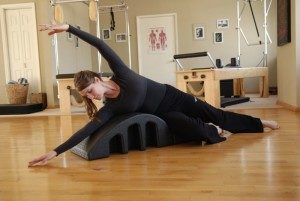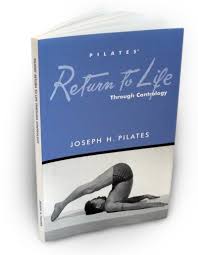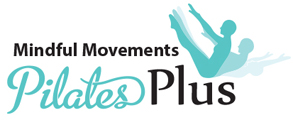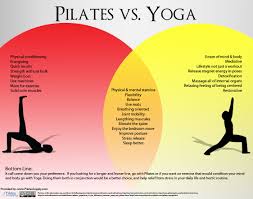 What is the difference between Yoga and Pilates? This question comes up frequently so I thought I would share some excerpts from an article written by Sherri R. Betz, PT. Sherri is the owner of TheraPilates Physical Therapy & Gyrotonic Studio in Santa Cruz, CA. She serves on the Board of Directors of the Pilates Method Alliance and is a principal educator for Polestar Pilates Education.
What is the difference between Yoga and Pilates? This question comes up frequently so I thought I would share some excerpts from an article written by Sherri R. Betz, PT. Sherri is the owner of TheraPilates Physical Therapy & Gyrotonic Studio in Santa Cruz, CA. She serves on the Board of Directors of the Pilates Method Alliance and is a principal educator for Polestar Pilates Education.
Sherri writes: You may have heard this joke: The difference between Pilates and yoga is that in yoga you close your eyes and think about God and in Pilates you keep your eyes open and think about your abs! And one guru said the purpose of yoga is to become more flexible so that you could sit comfortably to meditate. Yoga certainly is more than that!
Range of Motion
One of the main differences between the two, is that Pilates begins with small range of motion and progresses toward end range joint movement while yoga tends to hold postures at end range of joint motion and muscle length. This tends to make yoga postures more risky for the beginner or injured student.
Postures and Poses
Another interesting difference between Pilates mat and yoga classes is that yoga begins often with the Sun Salutation series that includes standing poses and push-ups while Pilates mat classes are meant to end with the 34th exercise, the Push-Up. Yoga warms up with standing postures and ends lying down and Pilates begins in supine positions and ends standing up. Yoga’s relaxation pose at the end of yoga class is meant to help the body integrate the postures, and Pilates’ purpose for ending in standing is to prepare the body for re-integration into functional daily activities.
Spirituality
We know that yoga stemmed from the Hindu religion, which drives many of the physical yoga practices we see today. Yoga practices usually incorporate a form of meditation or spiritual reflection for the purposes of achieving enlightenment.
In contrast, not much is known about Joseph Pilates’ spiritual or religious beliefs other than that he felt that his Contrology method—as he called what is now known as Pilates—was “the complete coordination of mind, body and spirit.” He stated in his writings that the “trinity” (mind, body and spirit) with the adoption of the principles of Contrology was necessary to achieve spiritual peace and everlasting happiness. Most of his statements about the benefits and goals of Pilates centered around mental clarity, zest for life and better concentration. In most Pilates classes and teacher training programs, this trinity, as a way to achieve spiritual peace, is rarely mentioned.
 About Pilates
About Pilates
Pilates is a system of exercise developed by Joseph and Clara Pilates from 1925-1967. Originally called Contrology by its creator, Pilates consists of mat or floor exercises progressing from small or mid-range movements to large end-range movements with flowing quality and correct biomechanical alignment. Positions are not generally held for long periods of time, rather, the student moves into and out of positions slowly at first progressing to a rapid but controlled pace. Mat exercises are complemented with special large and small apparatus to either assist movement or to resist movement. The large apparatus utilizes springs for assisting the rehabilitation patient or for challenging the experienced mover.
There are several styles of Pilates taught currently today. Classical or Original Pilates indicates that the teacher will be teaching the exercises exactly as Joseph taught them as well as in a particular order. Evolved or more modern Pilates means that the teacher or physical therapist might modify a particular exercise or select a group of exercises based on an initial assessment and gradually progress them to more advanced choreography.
Overall, the biggest difference between Pilates and yoga is the ultimate goal. Yoga provides a meditative environment for you to improve your overall quality of life. It focuses on stress relief while improving your body.
Pilates works from the center of your body outward. It forces you to increases your body awareness and work from your core, resulting in a stronger body. Yoga and Pilates each have their merits. The best part is that you really don’t have to choose. Combine Pilates with yoga for an amazing way to transform your daily routine.

